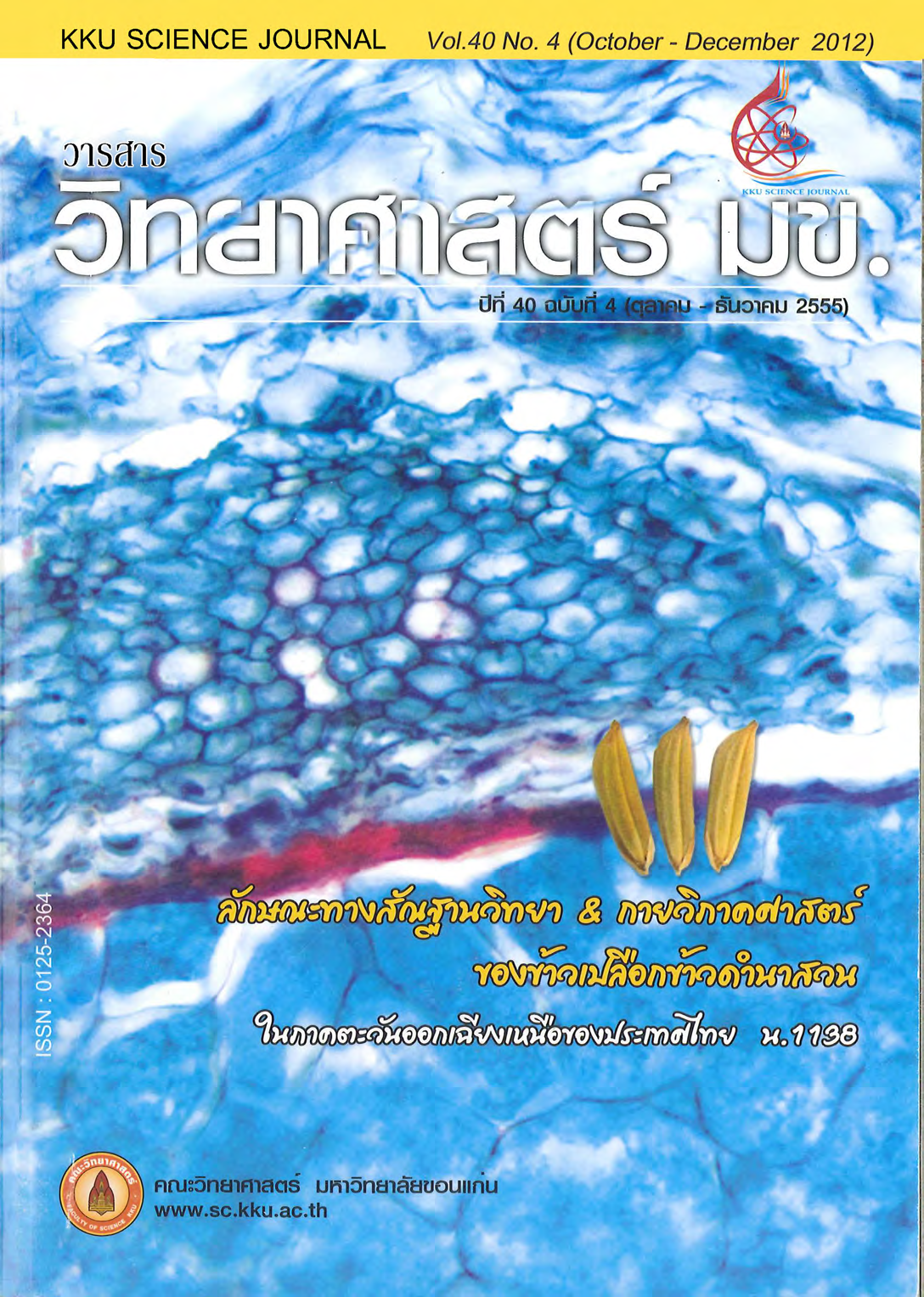Discriminant Analysis and Binary Logistic Regression for Prediction of Milk Production of Dairy Cattle Farms
Main Article Content
Abstract
There were 2 objectives in this study. The first objective was to evaluate the factors influencing on the milk production in dairy cows by using discriminant analysis (equal priors/proportional priors) and binary logistic regression. The second objective was to compare the classification efficiency among three multivariate analysis techniques in order to classified dairy farms into 2 groups that were high and low milk production based on the average milk yield for all studied dairy farms (13 kg/cow/day). The three methods were included discriminant analysis with equal priors, discriminant analysis with proportional priors and binary logistic regression. The attribute variables, blood level of Holstein Friesian cows (3 groups), age of cows (4 groups), year of birth of cows (5 groups), percentage of concentrate feed (3 groups) and location of farm (2 groups) were used to identify the group of farms. All information of dairy cattle farms were surveyed by using 120 questionnaires from dairy cattle farms in Tambon Sam Pra Ya, Cha-Am, Phetchaburi (60 farms) and in Tambon Huay Sat Yai, Hua-Hin, Prachuabkirikhan (60 farms). The results based on discriminant analysis revealed that the age of cows showed the highest classification scores (1.573). The classification scores were used to classify any farm into the group of farms with high or low milk yield. While the classification scores of other variables were ranged from 1.092 for blood level of Holstein Friesian, 0.736 for year of birth of cows, 0.521 for percentage of concentrate feed and 0.179 for location of farm, respectively. The study found that all 3 models showed the similar results. The correct classifications were 65 % for discriminant analysis with equal priors model while the results from discriminant analysis with proportional priors model was equal to the results from binary logistic regression model that was 64.2 %. The misclassification of dairy farms into 2 groups between groups of farm that showed low milk production and group of farms that showed high milk production for discriminant analysis with equal priors model were 43.5 % and 25.9 %, respectively, while the results from discriminant analysis with proportional priors model was equal to the results from binary logistic regression model that were 43.5 % and 27.6%, respectively. The results can be concluded that both types of discriminant analysis (with equal priors or with proportional priors) and logistic regression have similar efficiency for classification the farms into 2 groups according to the level of milk production.
Article Details

This work is licensed under a Creative Commons Attribution-NonCommercial-NoDerivatives 4.0 International License.


